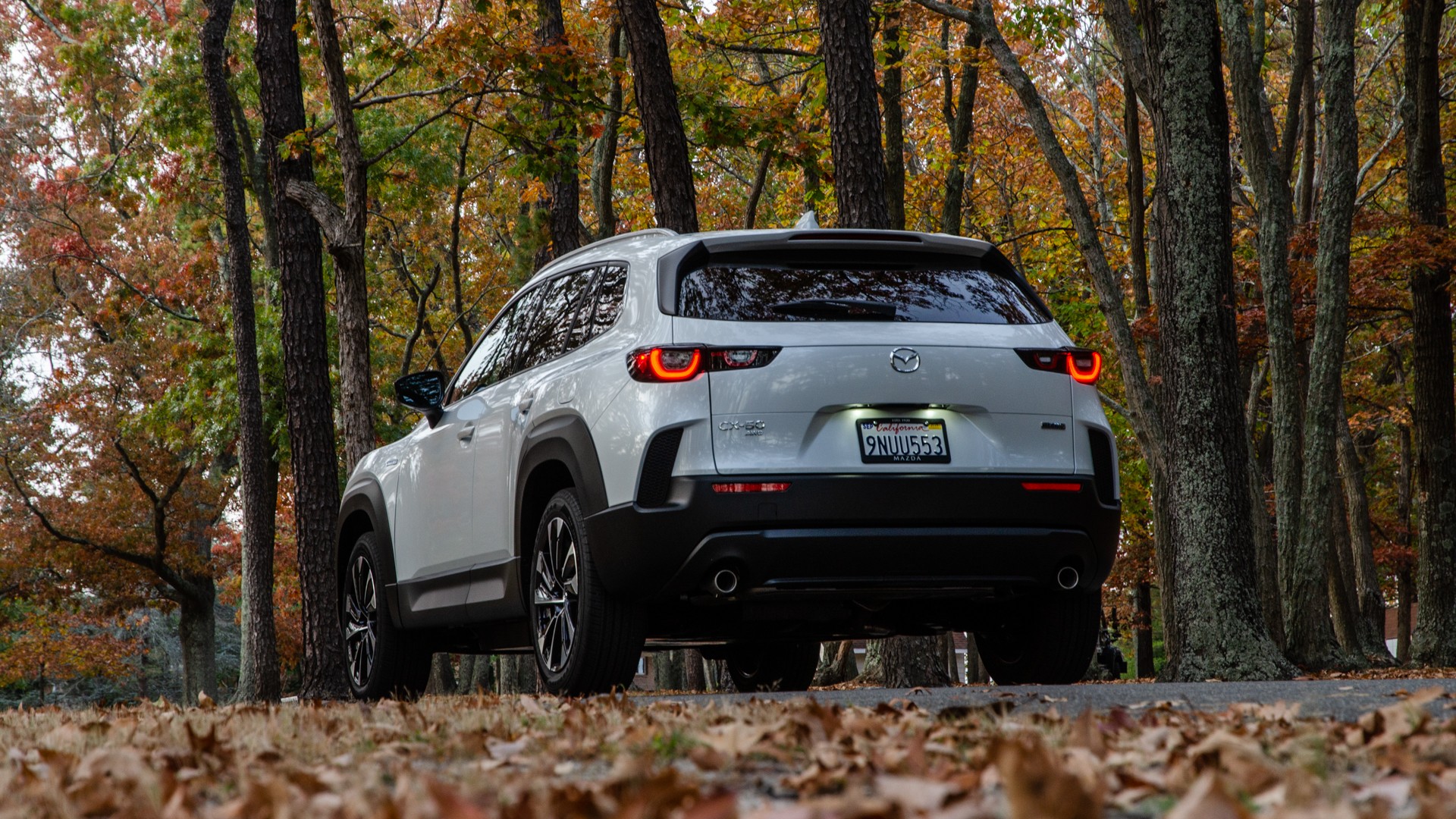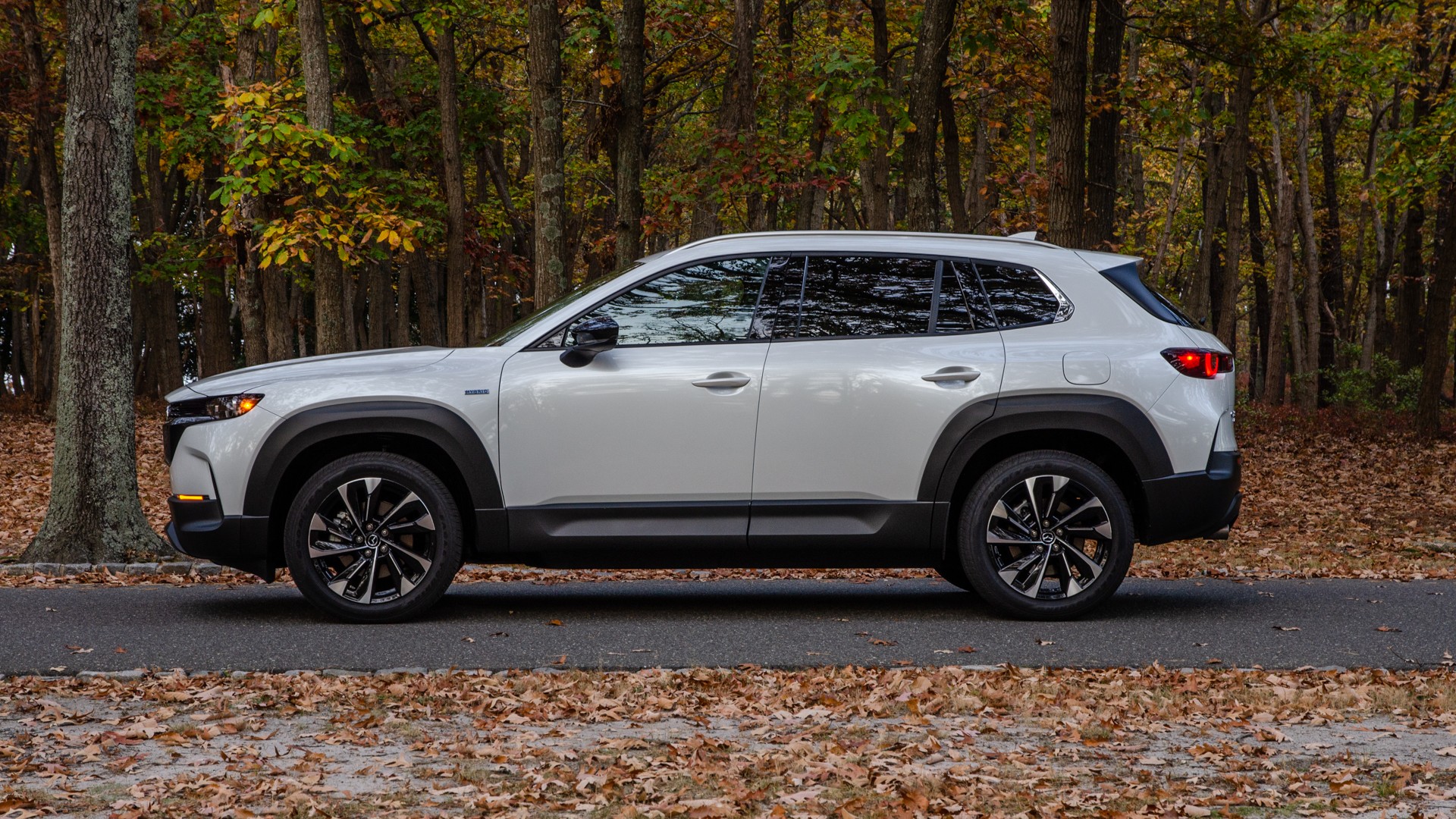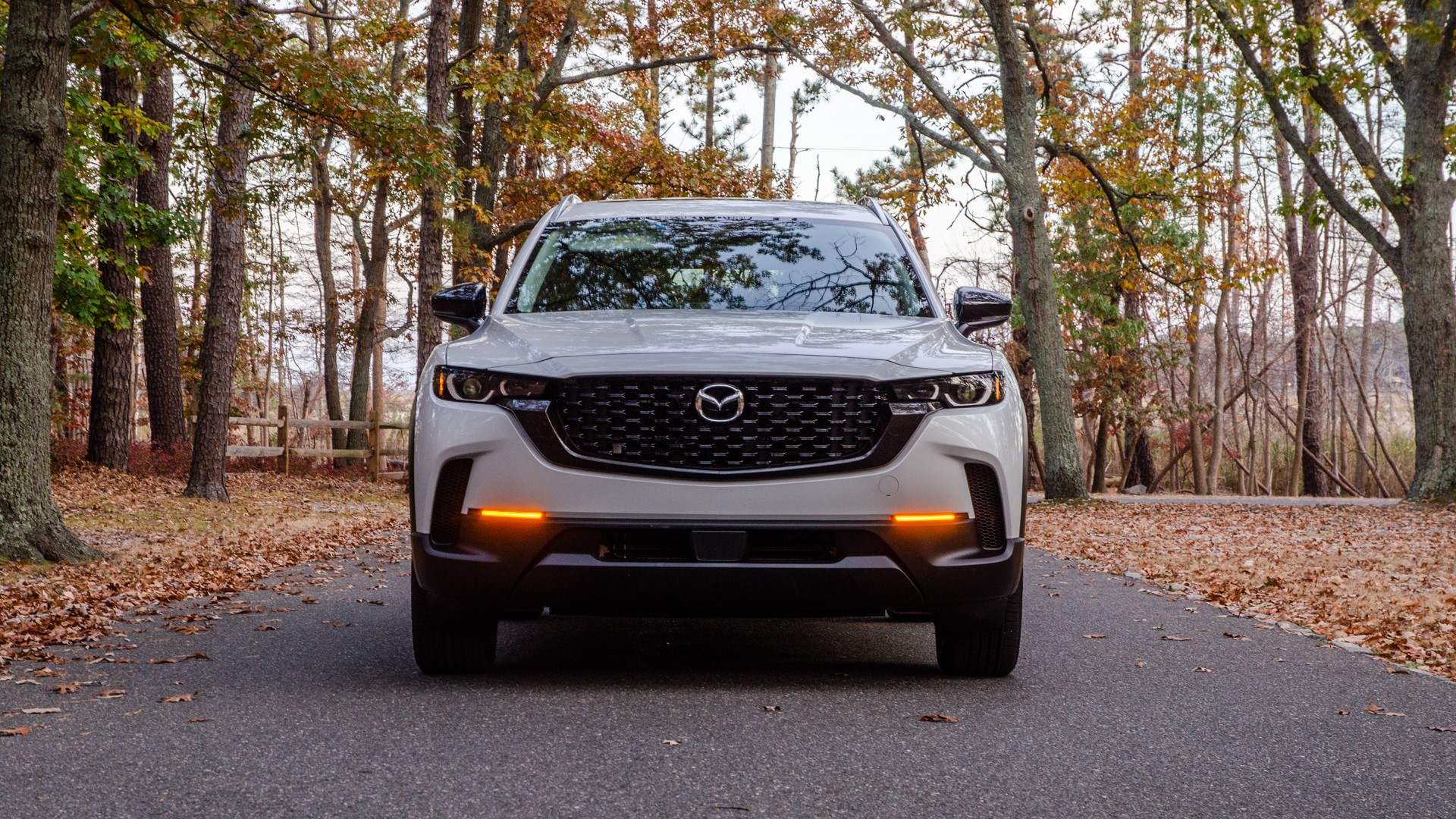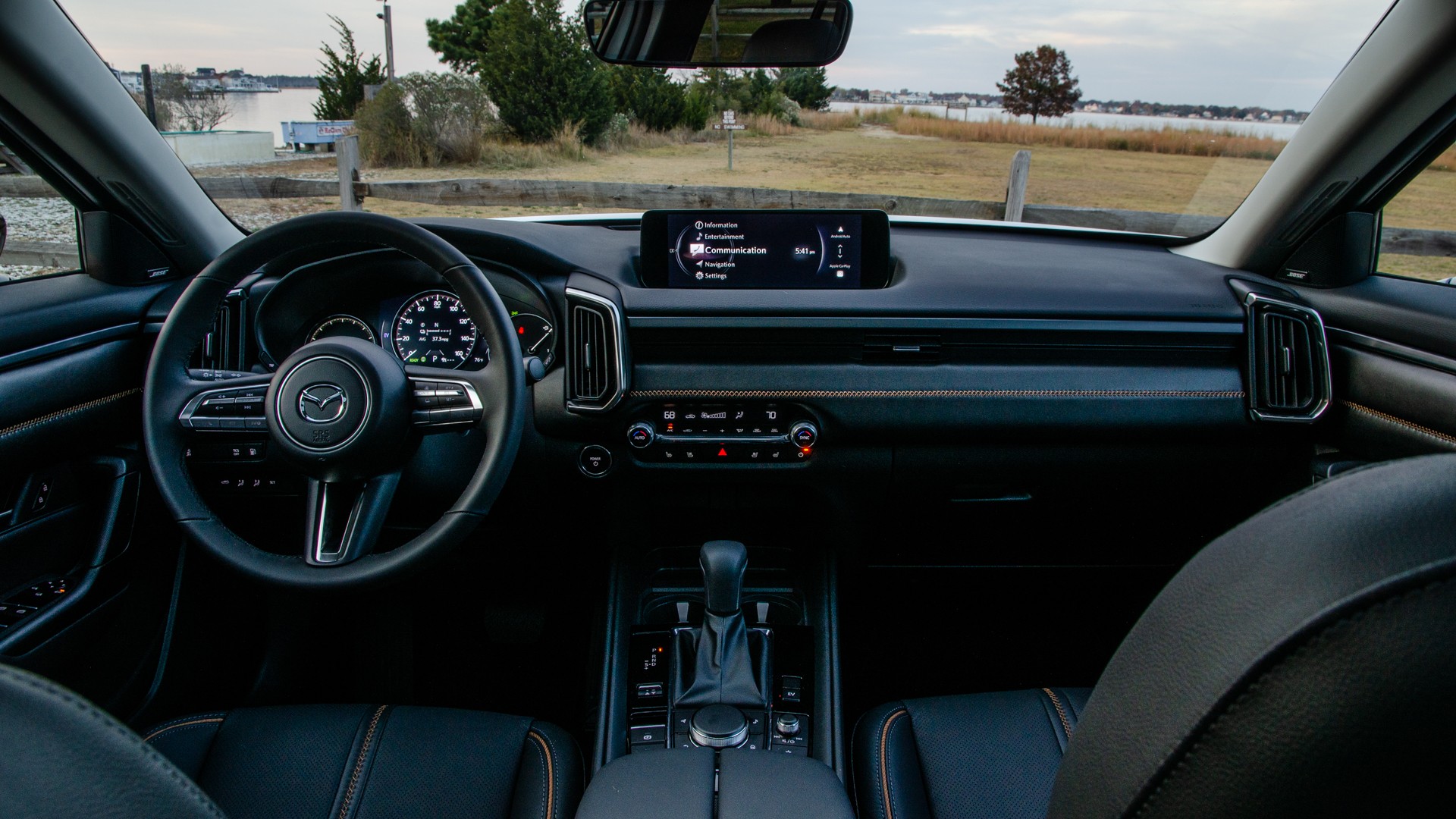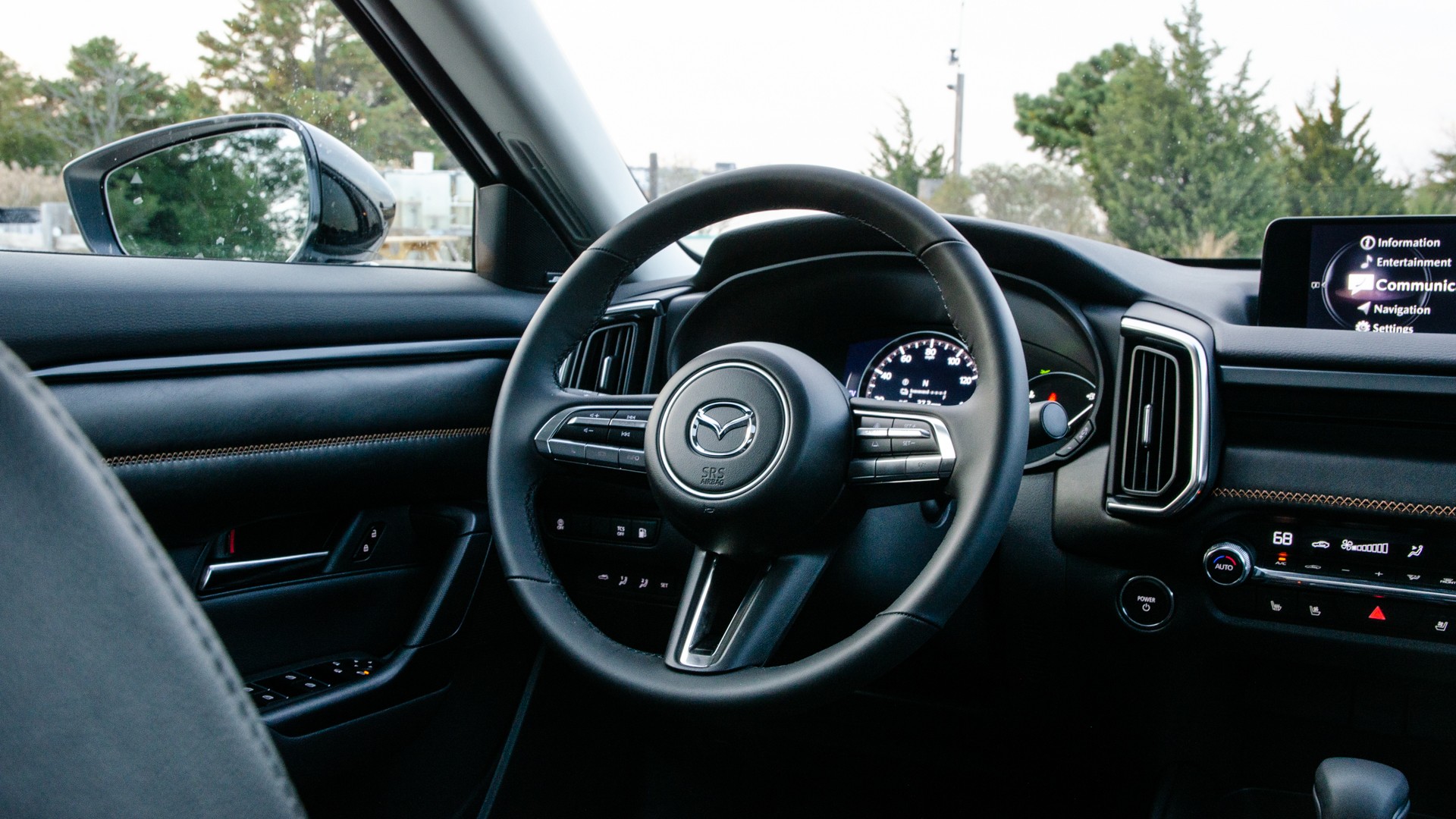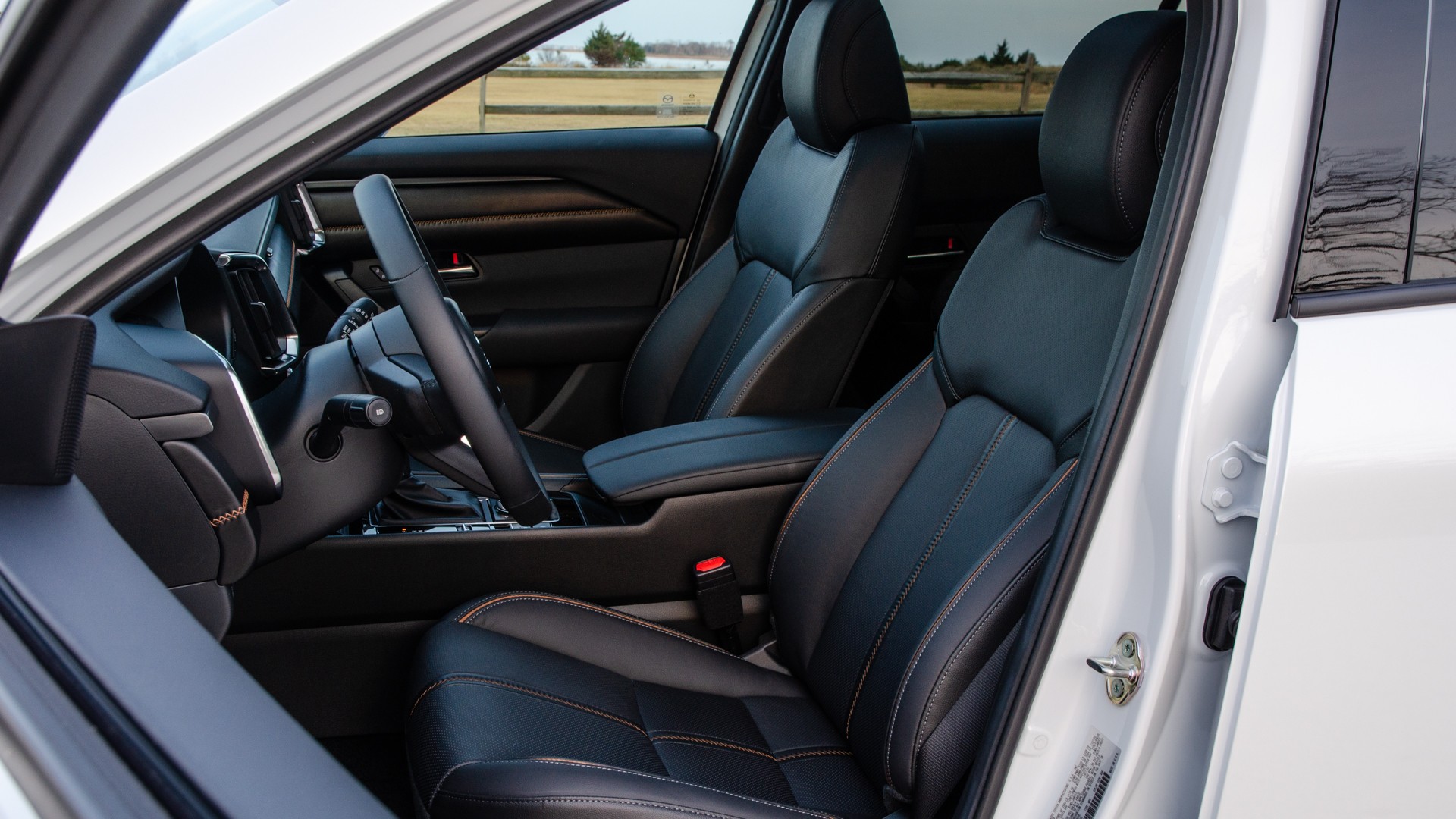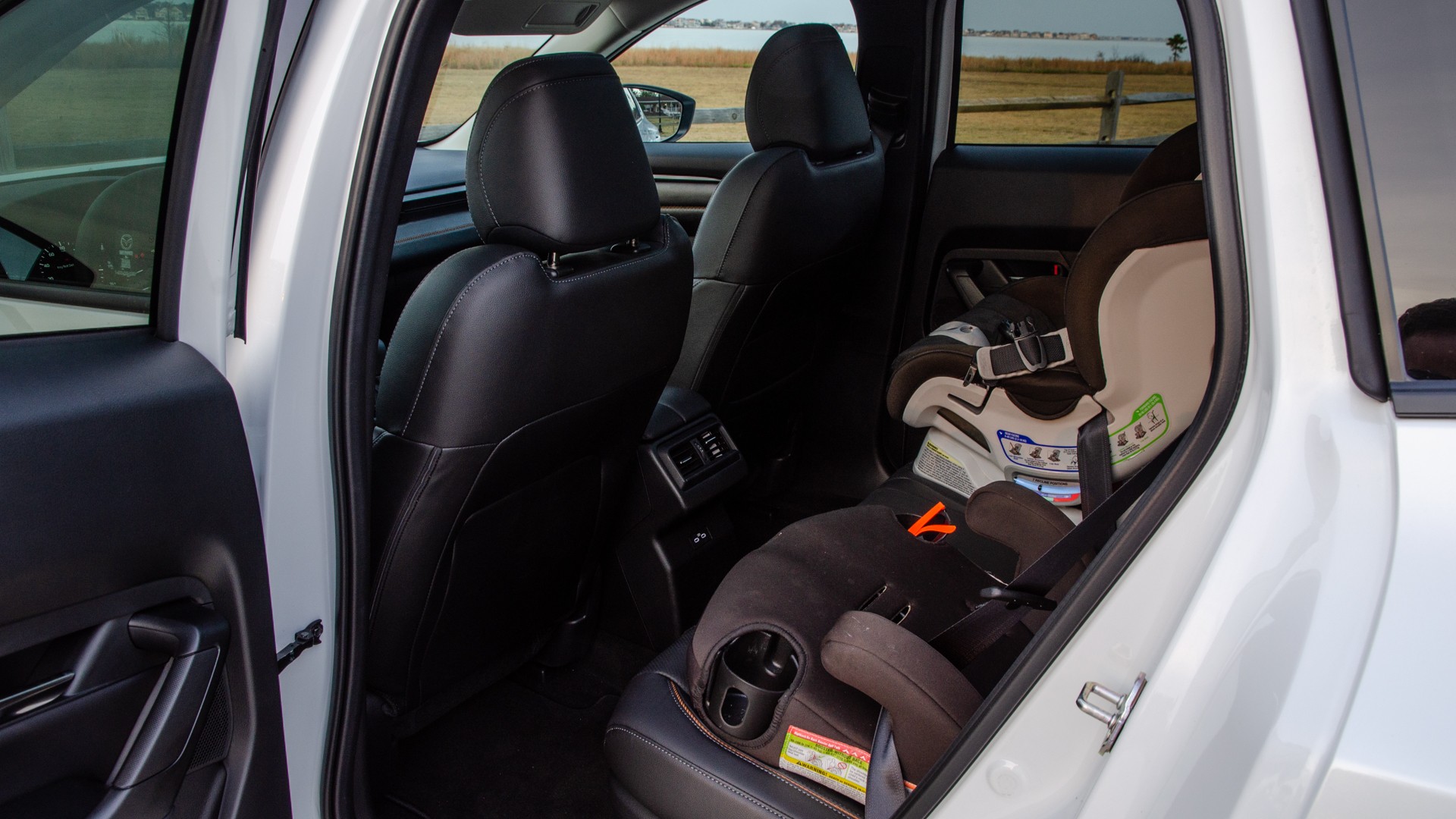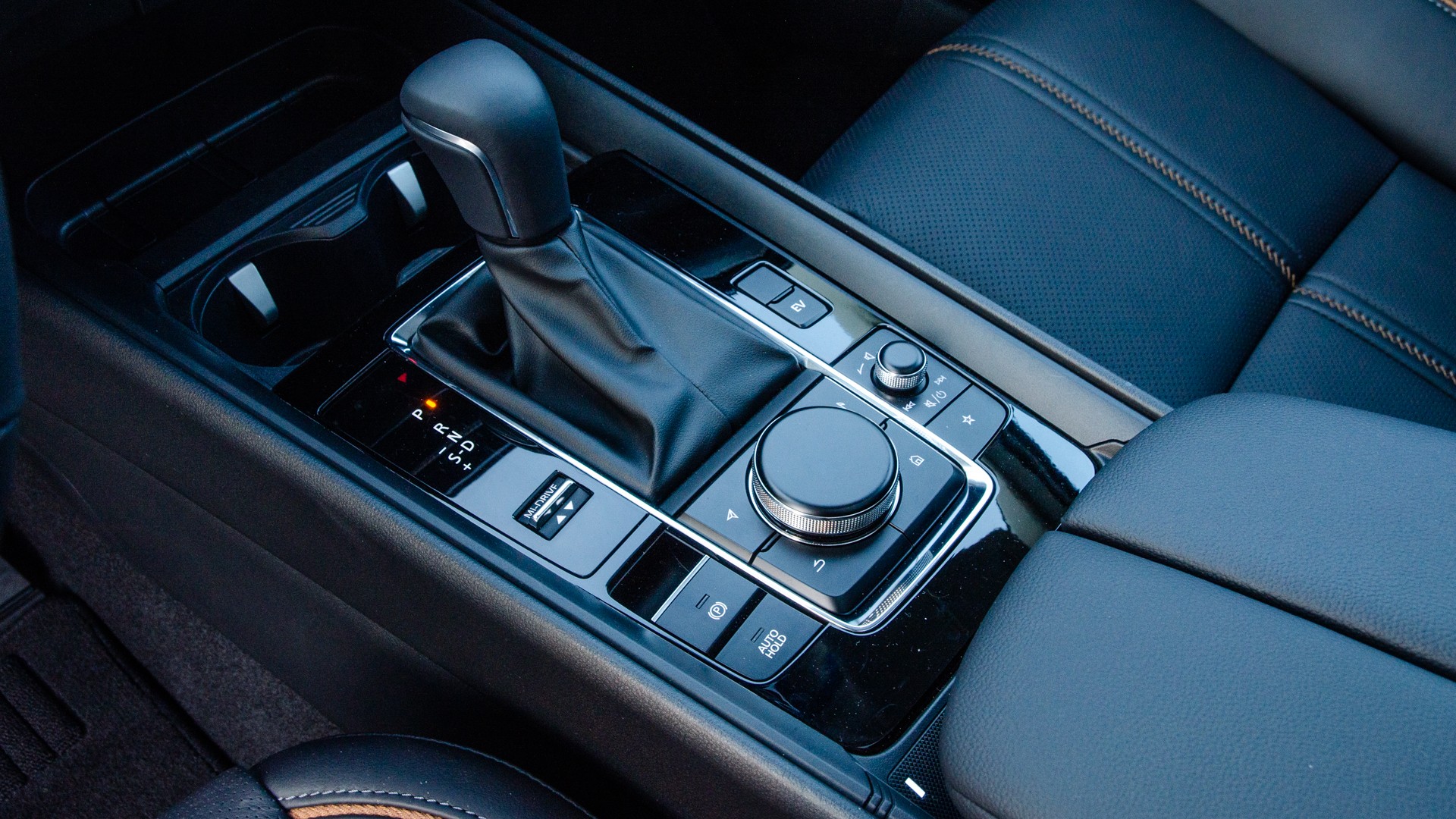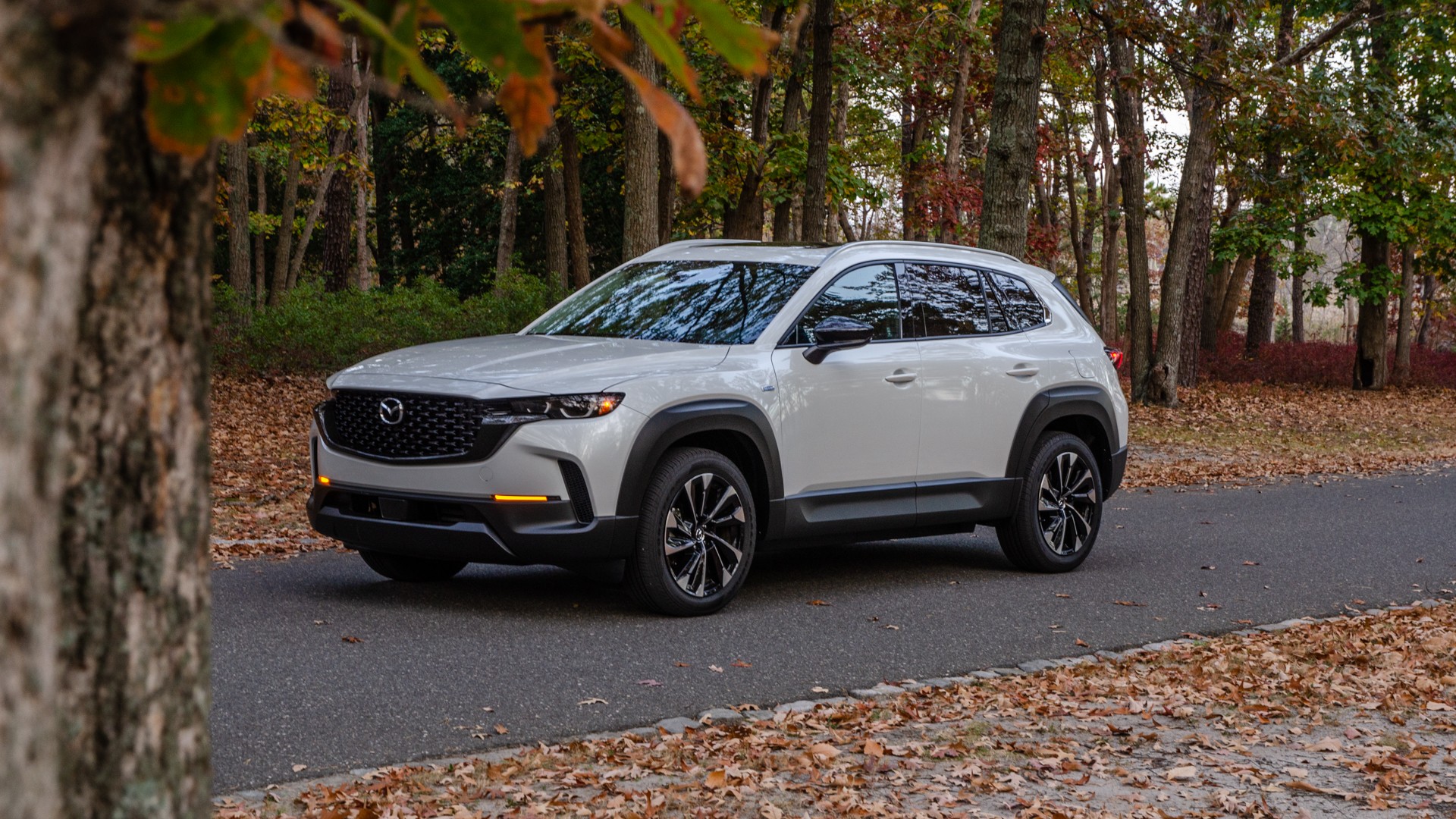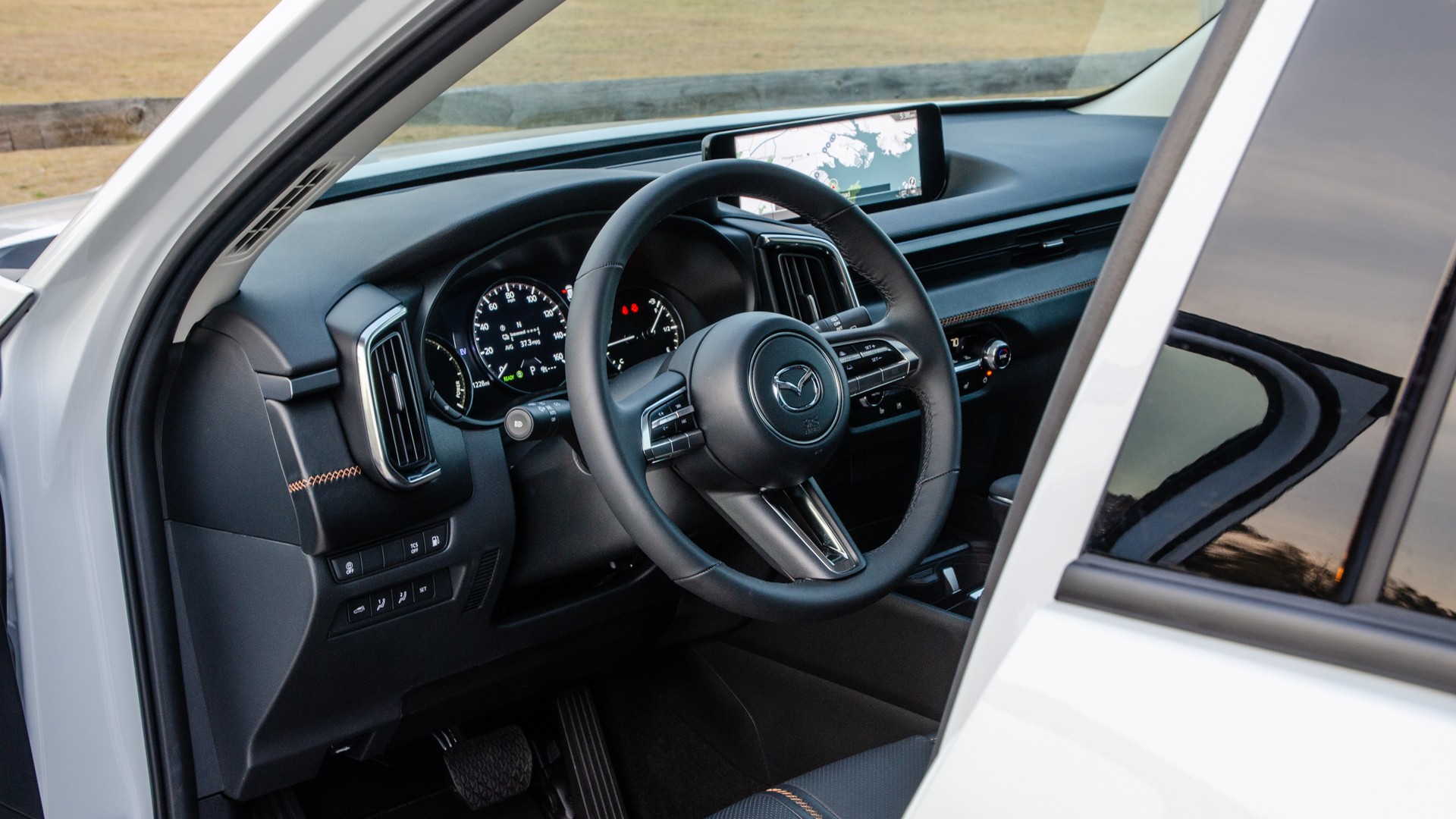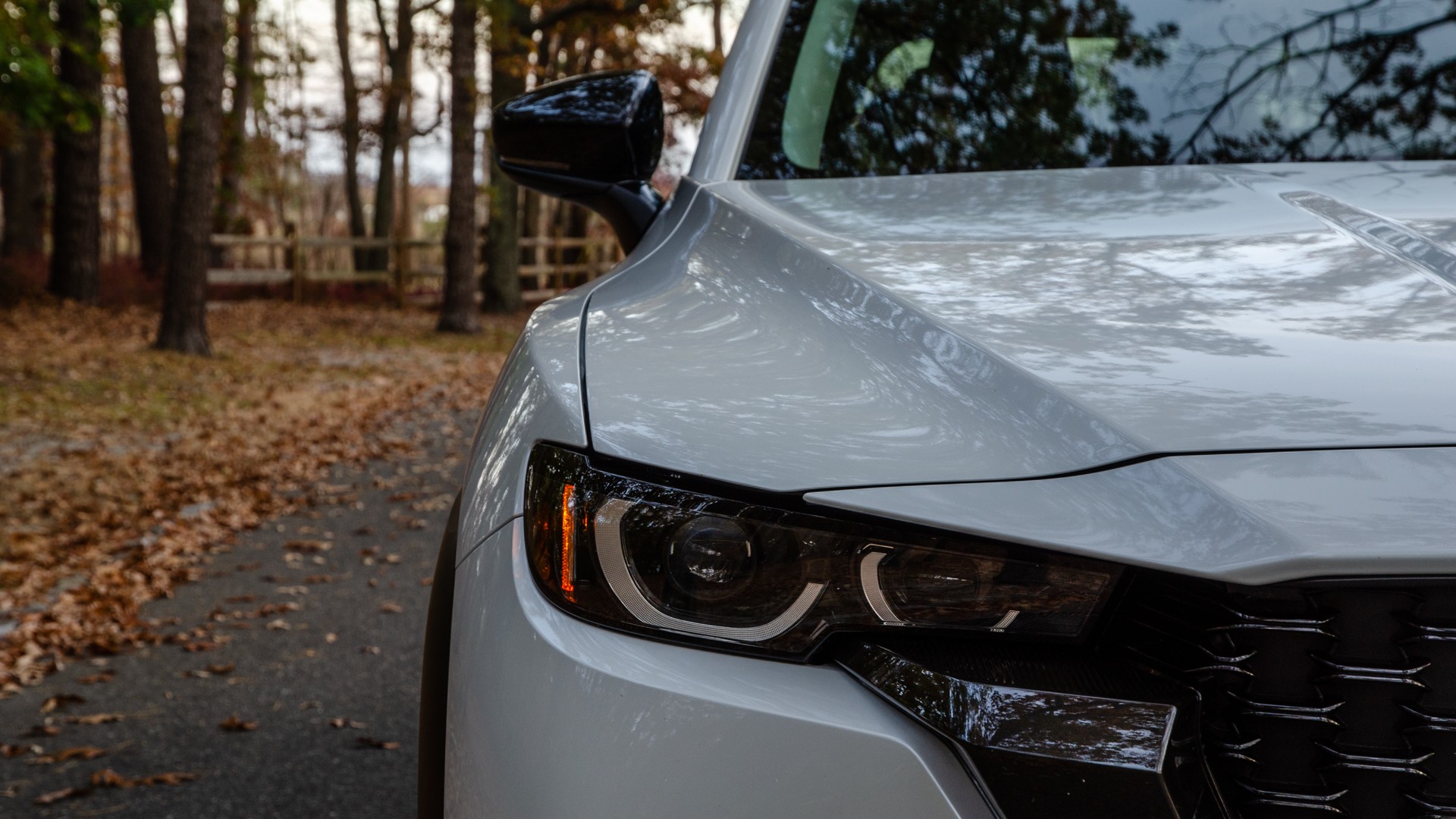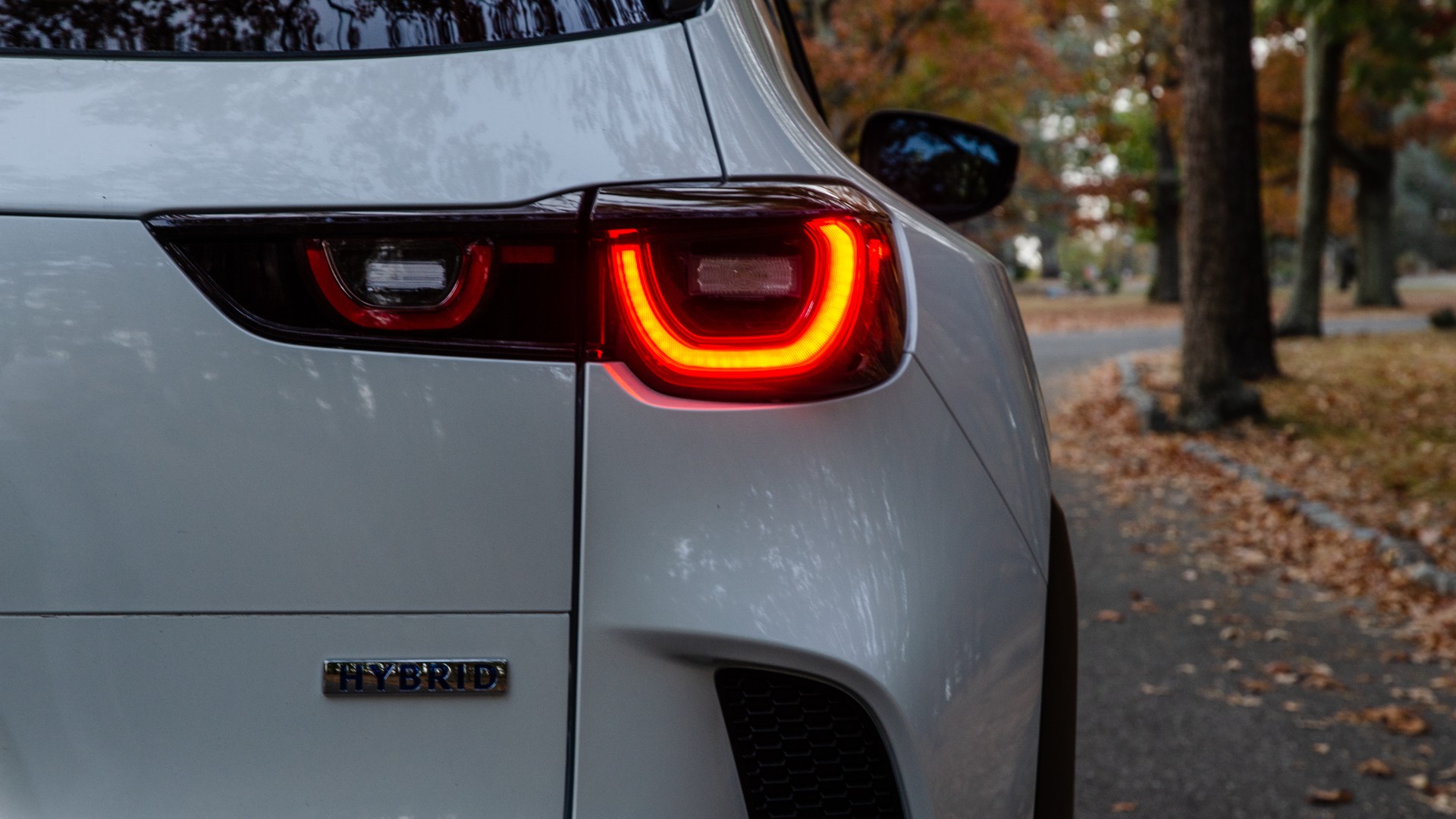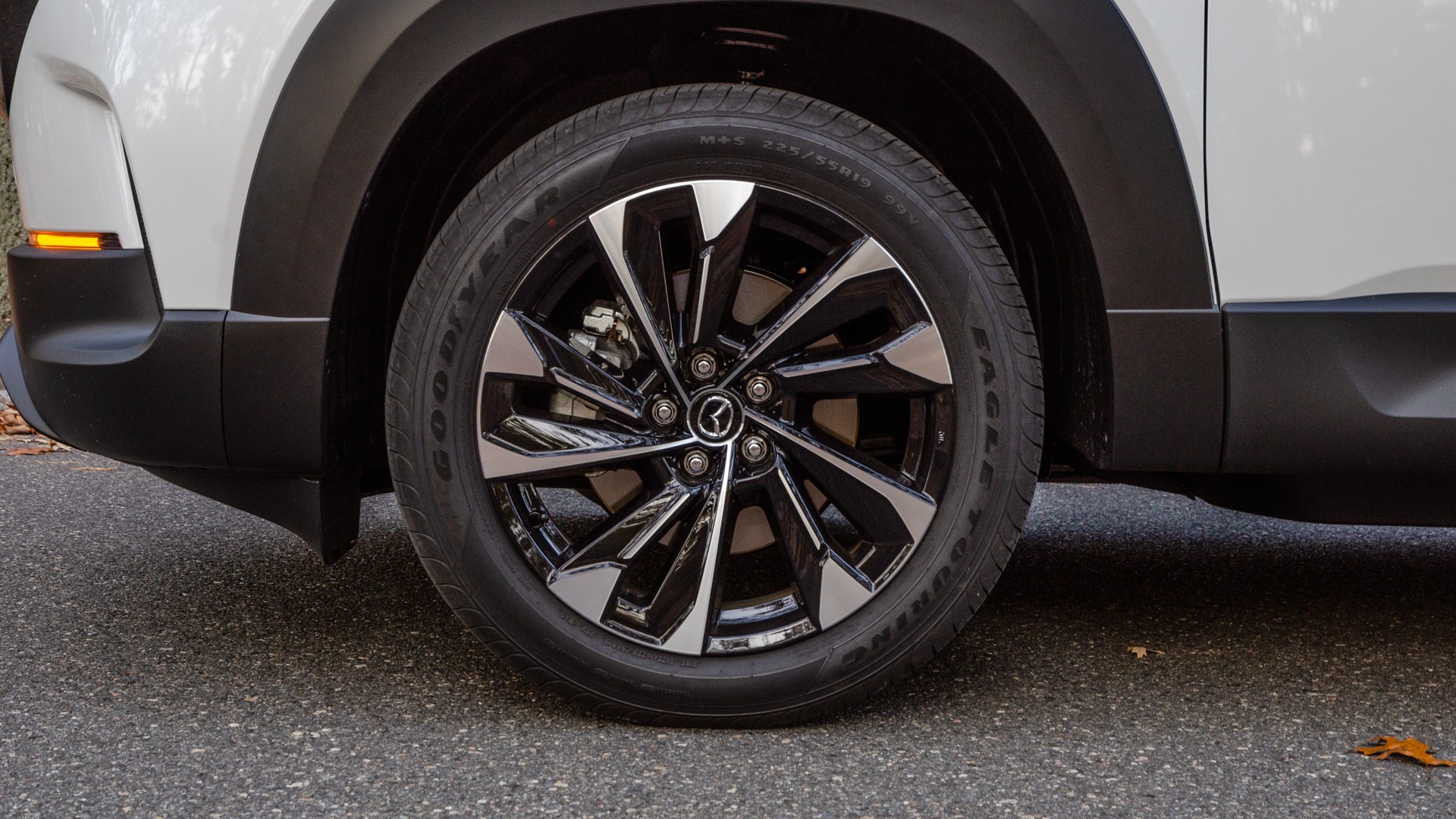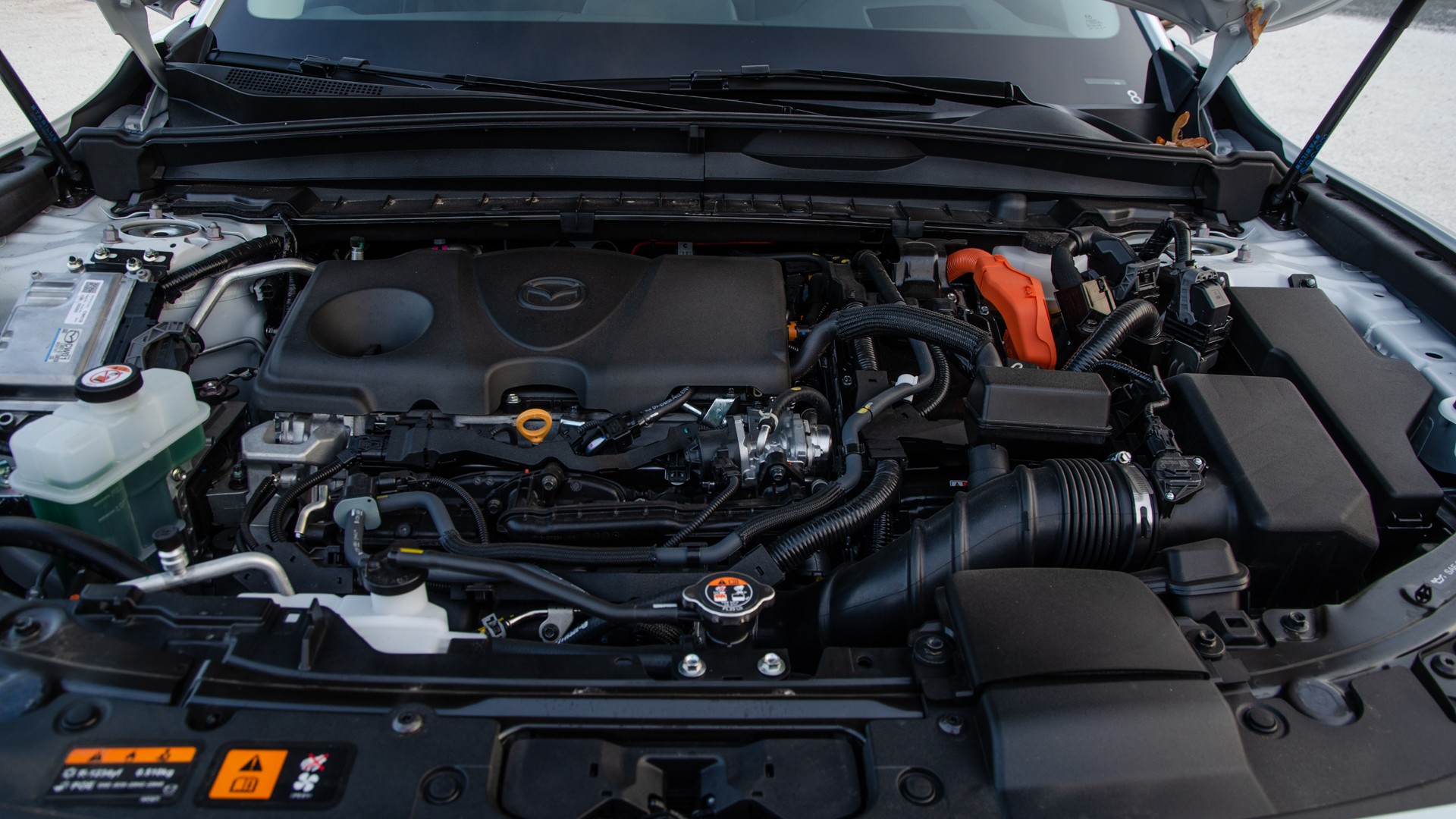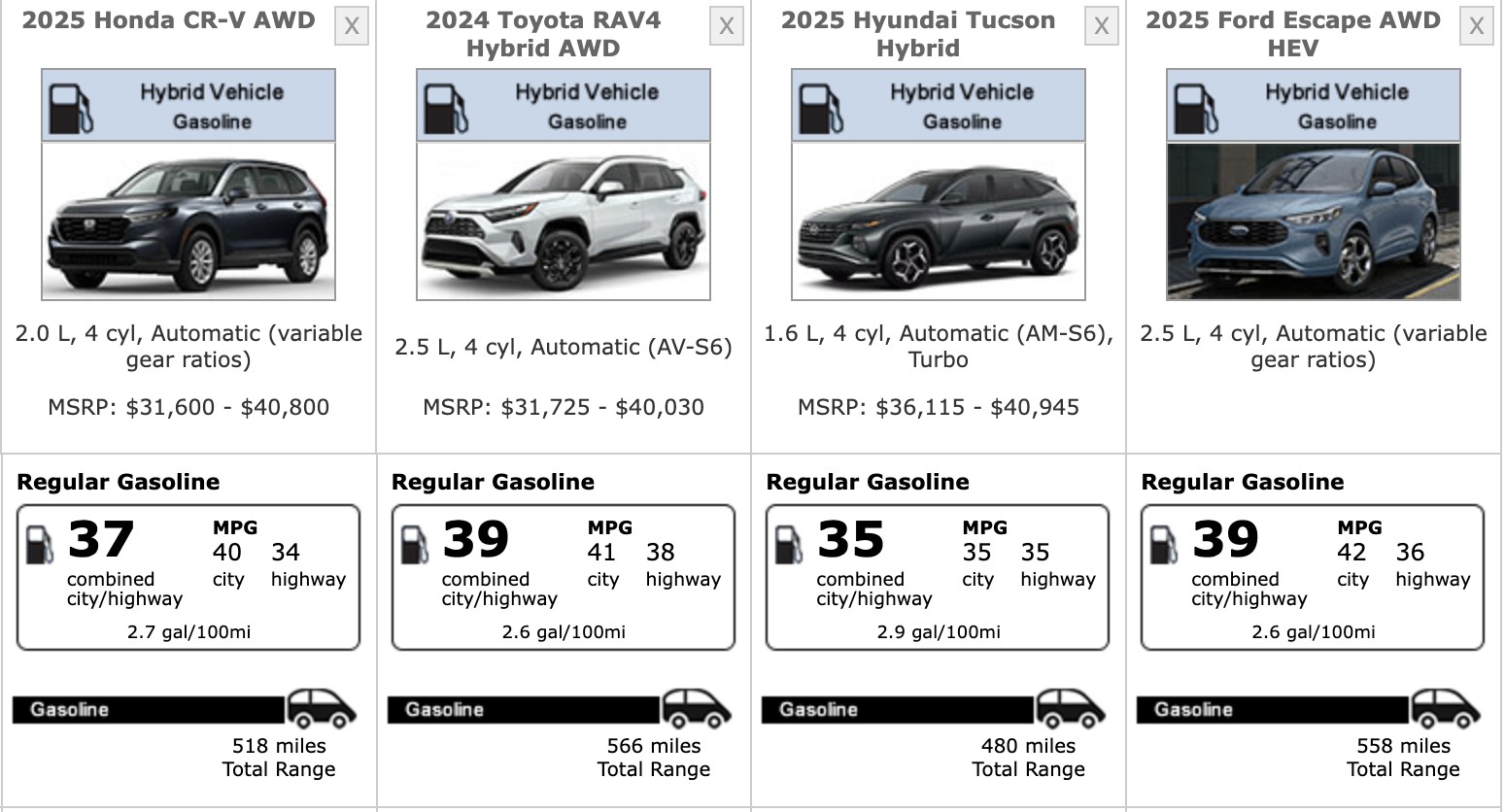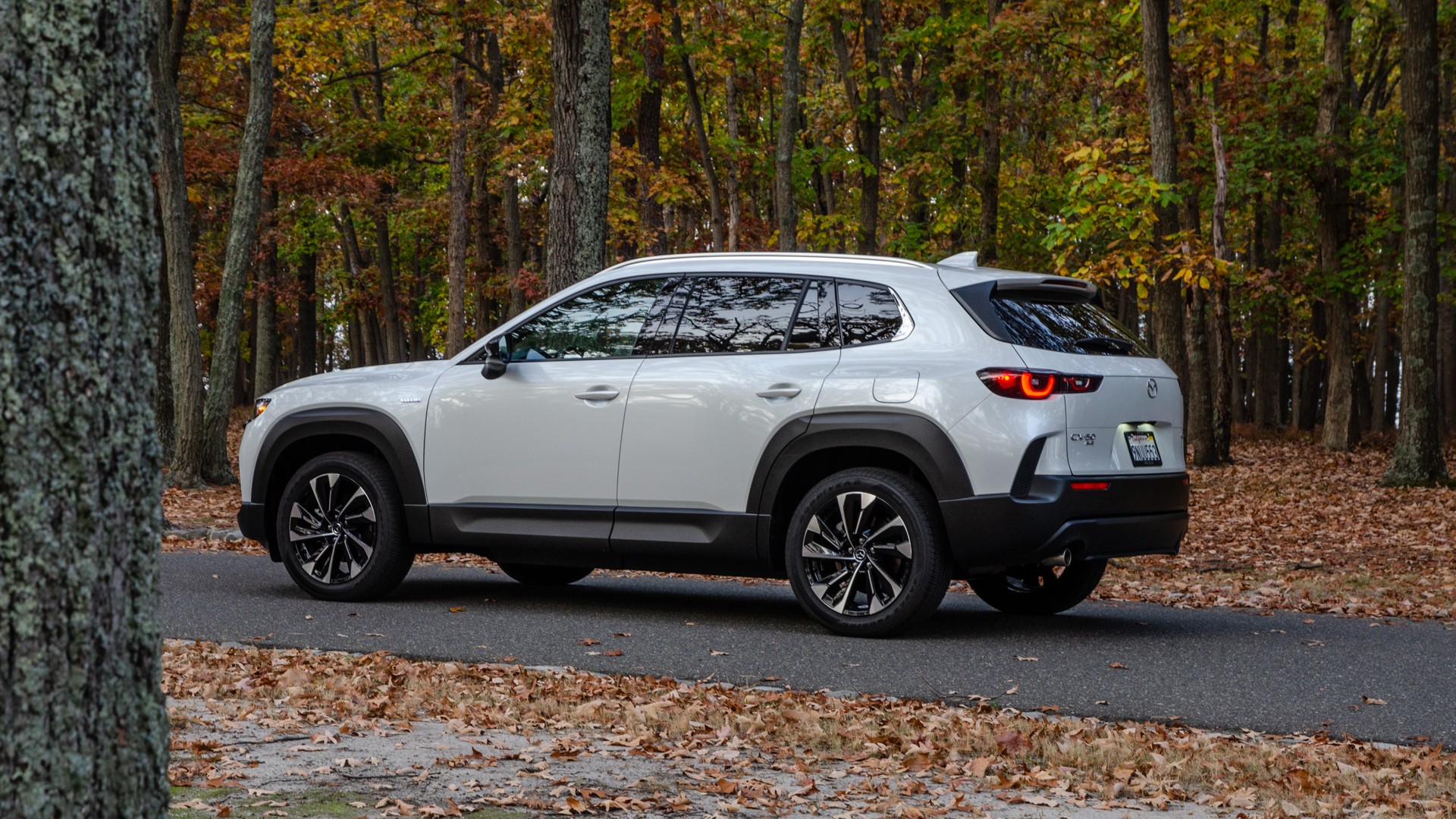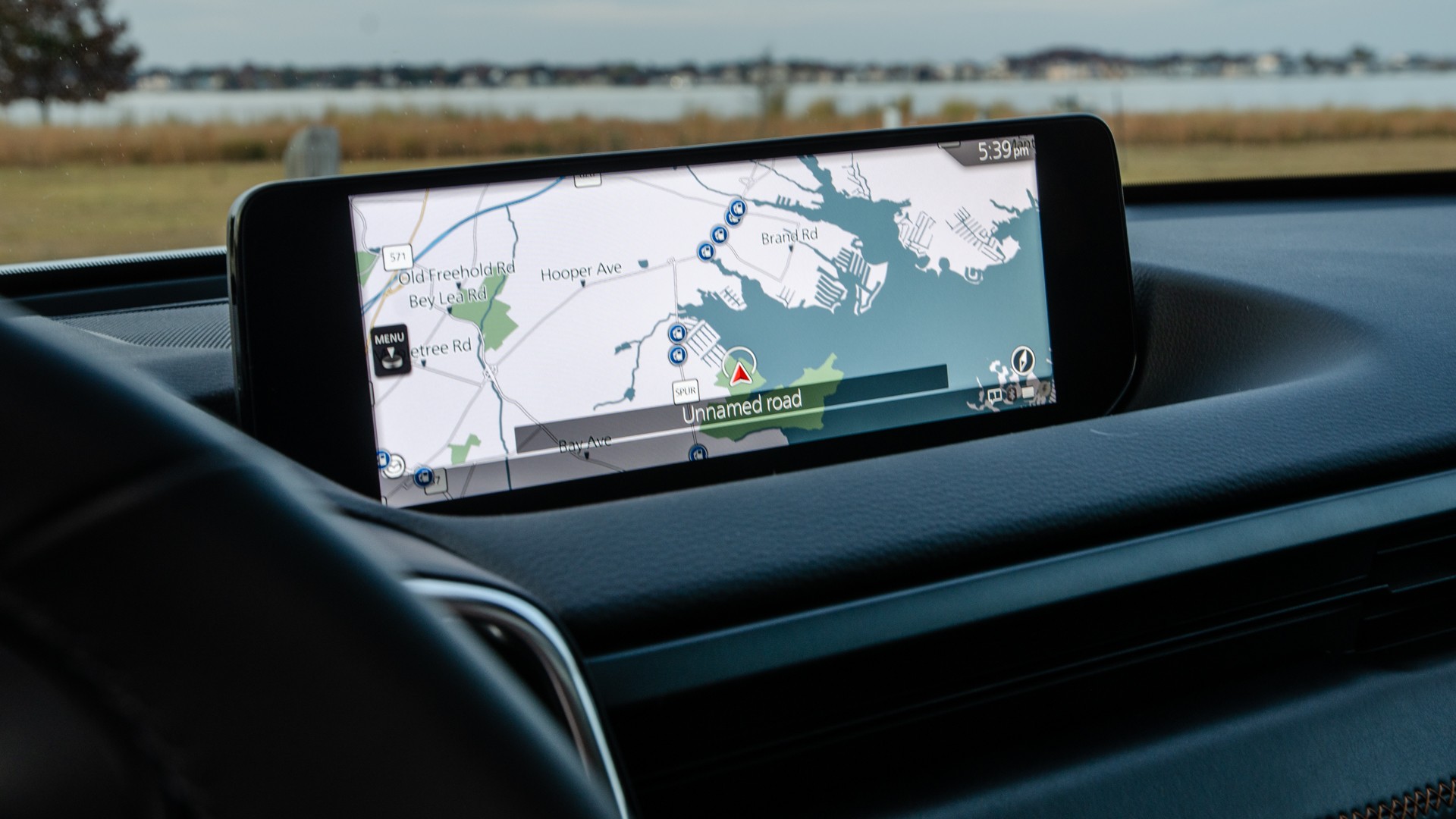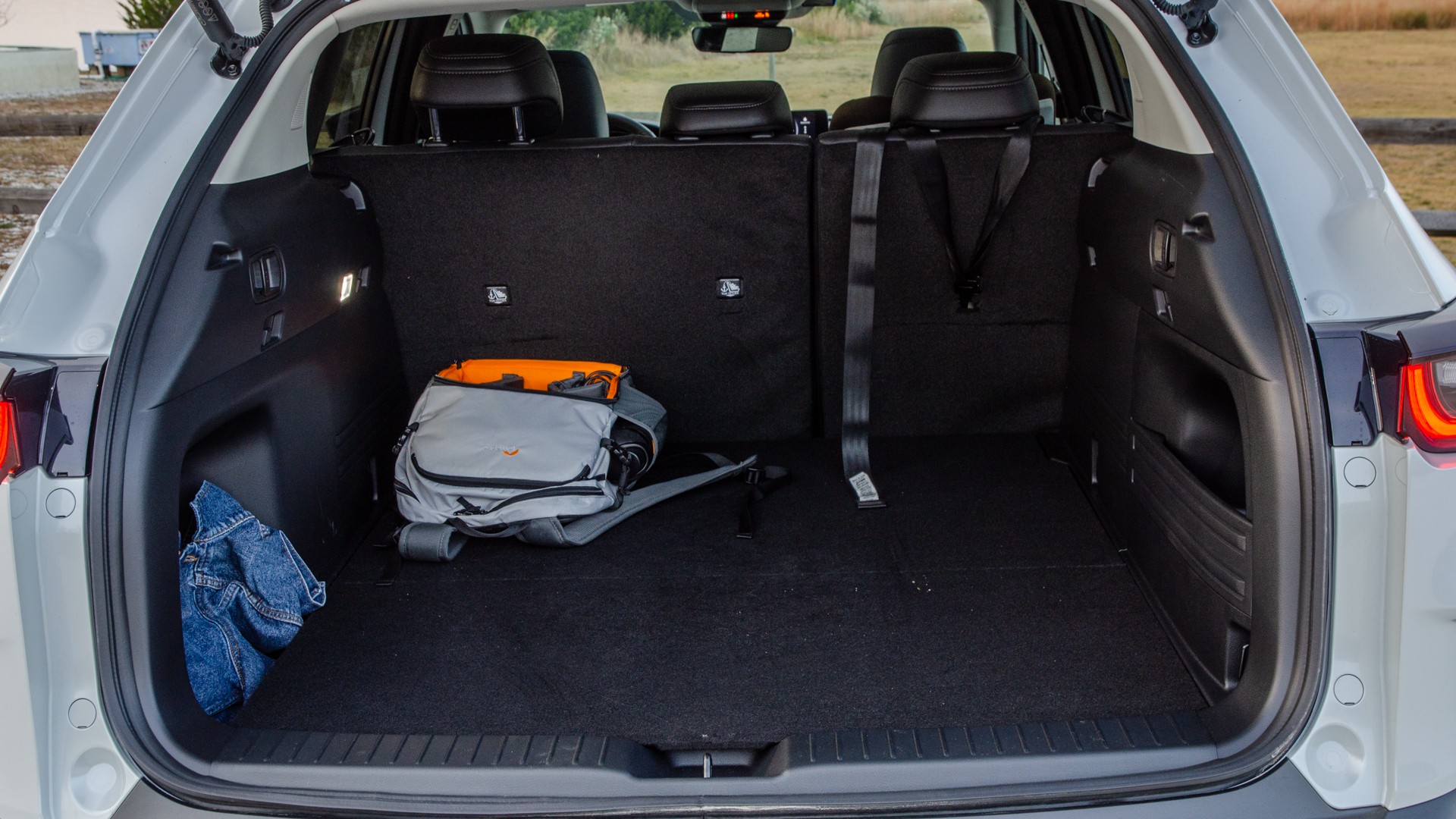The Mazda CX-50 has always appealed as a crossover that caters to driving enthusiasts. It’s a compact SUV that understands the needs of those transitioning from sports cars but now requiring more practicality. Yet, in a market dominated by giants like the Honda CR-V and Toyota RAV4, the standard CX-50 hasn’t fully broken through, partly due to its less impressive cabin technology and fuel economy – areas of high importance for crossover buyers.
Therefore, the announcement of a Mazda CX-50 Hybrid, promising to retain the beloved driving dynamics while addressing fuel efficiency with a hybrid powertrain, sparked considerable optimism. The vision of the same sporty chassis, refined suspension, and precise steering, now enhanced with electric drive and improved mileage, seemed like a winning formula.
However, the 2025 Mazda CX-50 Hybrid, while promising on paper, reveals a more complicated reality on the road. It matches its rivals in many aspects, but the Toyota RAV4-sourced hybrid powertrain paradoxically diminishes the CX-50’s inherent appeal, creating a sense of identity confusion. It’s as if the car is caught between two worlds, not fully committing to either.
So, who exactly is the target audience for this vehicle? It’s not a cutting-edge, tech-forward hybrid, sticking with a traditional hybrid system and infotainment that feels dated. Nor is it the sporty crossover it once was, as the new powertrain noticeably curtails its spirited performance. The CX-50 Hybrid occupies an awkward middle ground, feeling more like a forced compliance with market trends than a genuinely inspired Mazda creation.
Delving into the Basics of the Mazda CX-50 Hybrid
Instead of developing a proprietary hybrid system, Mazda opted to integrate technology from the Toyota RAV4 Hybrid for the CX-50 Hybrid. This decision stems from the collaborative partnership between the two automakers, with the CX-50 being manufactured alongside Toyota vehicles, including the Corolla Cross Hybrid, at their joint facility in Alabama. Beyond the powertrain, the CX-50 Hybrid maintains near-identical characteristics to its gasoline-only counterpart. The only discernible exterior changes are the subtle “Hybrid” badging and a revised instrument cluster, where the traditional tachometer is replaced by a gauge indicating battery charge and power usage.
Visually, distinguishing the Hybrid from the standard CX-50 is challenging without close inspection of the badges. This is, however, a positive attribute. Since its introduction, the CX-50 has stood out as one of the most aesthetically pleasing crossovers in its class. Its low-slung, muscular stance projects a sportier image than typically expected in this segment. All the defining design elements, including the robust wheel arches, low ride height, sleek window lines, and black body cladding, are retained, ensuring it remains as visually appealing as ever. While new wheel designs are introduced, they maintain a similar aesthetic to other CX-50 wheel options.
The interior design philosophy is consistent. Mazda has made minimal alterations for the Hybrid version, preserving the driver-centric cabin. This is both a blessing and a drawback. The upside is a well-constructed, ergonomically sound interior, instantly familiar to drivers accustomed to performance-oriented vehicles. The downside is the carry-over of the infotainment system, which feels increasingly outdated, especially when competitors in the same price bracket offer significantly more advanced technology.
As previously mentioned, the tachometer is replaced with hybrid-specific gauges. However, the displayed information is quite basic, limited to indicating battery usage and charging status. Detailed power flow diagrams, common in both the RAV4 and CR-V Hybrids, are absent. For those who appreciate a deep dive into hybrid technology and its operational intricacies, the CX-50 Hybrid’s instrumentation might feel somewhat superficial.
Behind the Wheel: Driving Dynamics of the Mazda CX-50 Hybrid
The RAV4’s hybrid powertrain takes center stage in the driving experience, for better or worse. It features a 2.5-liter Atkinson cycle, naturally aspirated four-cylinder engine coupled with three AC motors – two supporting the engine and one driving the rear axle. The combined system output is 219 horsepower and 163 lb-ft of torque, making it the least powerful CX-50 variant available, and this is palpable in its performance. Regardless of speed or throttle input, the car feels underpowered. The continuously variable automatic transmission (CVT), known for its droning engine note under hard acceleration, further detracts from the driving pleasure.
While no one expects the CX-50 Hybrid to deliver sports car-like acceleration, the powertrain is characterized by a dullness, coarseness, and overall unenjoyable operation that diminishes the driving experience. The silver lining is its impressive fuel efficiency. During the test drive, an average of 37 mpg was achieved, closely aligning with Mazda’s claimed figures.
The standard CX-50 is recognized for its exceptional agility within the crossover segment, boasting superior steering feel and balanced handling compared to most competitors. This agility remains in the Hybrid version when navigating winding roads; it still feels remarkably like a sports car in SUV clothing. However, attempting to exploit this agility with enthusiastic acceleration reveals a significant performance gap. The chassis possesses the moves, but the powertrain lacks the muscle to truly capitalize on it.
However, it’s not all negative. Mazda’s expertise in suspension tuning is evident in the Hybrid model, which offers the same refined ride quality as its gasoline counterparts. The brakes are commendable, providing excellent pedal feel and immediate bite. Visibility is also good, making it easy to maneuver the car despite its substantial front end. Drivers who appreciate the driving characteristics of the standard CX-50 will find familiarity in the Hybrid, until demanding more power.
Highs and Lows: Key Aspects of the CX-50 Hybrid
For drivers who prioritize engaging driving dynamics, few crossovers can rival the CX-50’s steering feel, suspension tuning, and overall handling balance. The DNA of the MX-5 is clearly present in its design. The main instrument gauges are also a highlight, offering simplicity and readability, even if they appear somewhat basic compared to contemporary digital clusters. While the hybrid-specific gauge is less informative, the standard gauges are well-executed. The seats provide a comfortable and supportive balance for both spirited driving and long journeys, mirroring the qualities found in the gasoline CX-50.
Beyond the hybrid powertrain concerns, the CX-50 is not without other shortcomings. The infotainment screen is notably behind the curve in terms of technology. Although wireless Apple CarPlay is a welcome feature, its integration with Mazda’s rotary scroll wheel is cumbersome. While rotary controllers were favored in older BMW and Audi infotainment systems, those systems were designed around this input method. Apple CarPlay, designed primarily for touch interfaces, feels clunky and less intuitive when operated with the rotary dial in the CX-50.
Mazda CX-50 Hybrid Features, Options, and Market Competition
A notable advantage of the Hybrid model is the standard inclusion of all-wheel drive. Interestingly, the standard color options are somewhat unconventional. Instead of the typical white and black base colors, the CX-50 Hybrid standard palette includes blue and black, a decision that suggests a departure from the norm within Mazda’s product planning.
The test vehicle was the top-tier Premium Plus trim, which carries a significant price premium. However, it comes equipped with desirable features such as a panoramic sunroof, 19-inch wheels, a 12-speaker Bose sound system of decent quality, heated leather seats, and a heated steering wheel. While the as-tested price of $41,920 seems steep given the CX-50 Hybrid’s power and performance limitations, the equipment level is comprehensive.
The most direct competitor is the Toyota RAV4 Hybrid, sharing the same powertrain and a similar price point. The RAV4 Prime plug-in hybrid, while starting at a higher price, offers a significantly more potent and refined plug-in hybrid system. Honda’s CR-V Hybrid is also a strong contender. Despite a slightly lower horsepower rating on paper, its innovative two-motor hybrid system feels responsive and energetic. While not as dynamically engaging as the Mazda in corners, it compensates with a superior powertrain and more contemporary technology.
The Hyundai Tucson Hybrid also exists within this competitive landscape, offering another option in the hybrid crossover segment.
Fuel Efficiency: Does the CX-50 Hybrid Deliver?
Fuel economy is a primary motivator for choosing a hybrid, and the Mazda CX-50 Hybrid is designed to prioritize efficiency over outright performance, even though its chassis suggests otherwise. Official EPA fuel economy figures were not yet available at the time of testing, but the observed 37 mpg in mixed driving conditions is commendable. Mazda’s estimates of 39 mpg city, 37 mpg highway, and 38 mpg combined appear to be accurate based on initial testing.
These figures place the CX-50 Hybrid squarely in competition with hybrid versions of the Honda CR-V, Toyota RAV4, Hyundai Tucson, and Ford Escape in terms of fuel efficiency.
Value Proposition and Final Verdict
The 2025 Mazda CX-50 Hybrid’s value proposition is questionable, even with a relatively modest price increase over the standard gasoline model. While it offers improved fuel efficiency, other hybrid crossovers in the same price range deliver superior efficiency and more advanced technology. For buyers specifically seeking a hybrid powertrain, there are arguably better alternatives available, including models that utilize the same powertrain.
While some buyers may be drawn to the idea of combining the CX-50’s engaging driving dynamics with hybrid efficiency, the current execution falls short. The hybrid system compromises too much of the CX-50’s inherent character, making it feel like a necessary addition to meet market demands rather than a genuinely desirable evolution of the model.
| 2025 Mazda CX-50 Hybrid Specs |
|---|
| Base Price (Premium Plus as tested) |
| Powertrain |
| Horsepower |
| Torque |
| Seating Capacity |
| Cargo Volume |
| Curb Weight |
| Max Towing |
| Fuel Economy |
| Quick Take |
| Score |
